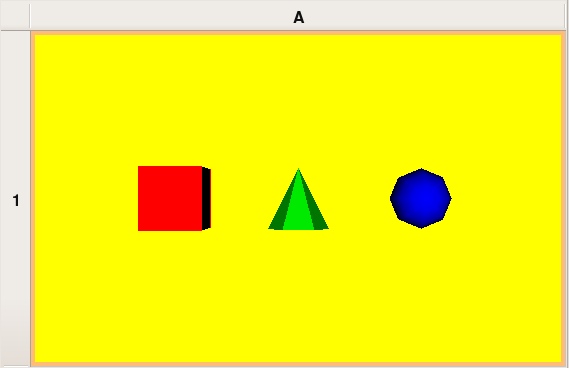Difference between revisions of "SciVisFall2008/Assignment 0"
m |
m |
||
| Line 31: | Line 31: | ||
=== Problem 4: parameter exploration === | === Problem 4: parameter exploration === | ||
Starting with the isosurface figure that you generated in Problem 1, | |||
you will perform a parameter exploration to study the range of | |||
isosurfaces for this dataset. After selecting the "Problem 1" | |||
version, you can go into parameter exploration mode. To explore | |||
the isosurface values, you can drag the "SetValue(0, 0.3)" text | |||
into the parameter exploration canvas. You should do an exploration | |||
in the range of 0.0 to 1.0 in 6 steps, in the x-axis. At this point, | |||
the spreadsheet should be populated with a number of vistrails. | |||
Identify the "blue" one, and add it to the version tree. This | |||
can be done by going into the "View" menu on the spreadsheet, | |||
and clicking on the "Create Version" icon in the spreadsheet | |||
cell showing the blue isosurface. The history tree should have | |||
a new node that you should tag "Problem 2". (You can change | |||
the spreadsheet back to interactive mode by using the "View" | |||
menu again.) | |||
=== Problem 5: matplotlib === | === Problem 5: matplotlib === | ||
Revision as of 19:34, 8 September 2008
Problem 1: query by tag, execute, annotate, query by example and prune history
To make sure you know how to search versions in the history tree of Vistrails do the following simple task:
1) In the History view locate the version tagged "EX1". Execute this version and annotate it with the name that appears in the visualization.
2) Query by Example Delaunay
Problem 2: pipeline from an image
From the root version on the history tree design a pipeline to reproduce the image below.
Tag the version with the resulting pipeline with label "Problem 2".
Problem 3: pipeline from C++ code
Starting from the root version on the history tree design a pipeline that is equivalent to the C++ source contQuad.cxx.
Tag the version of the resulting pipeline with label "Problem 3".
Problem 4: parameter exploration
Starting with the isosurface figure that you generated in Problem 1, you will perform a parameter exploration to study the range of isosurfaces for this dataset. After selecting the "Problem 1" version, you can go into parameter exploration mode. To explore the isosurface values, you can drag the "SetValue(0, 0.3)" text into the parameter exploration canvas. You should do an exploration in the range of 0.0 to 1.0 in 6 steps, in the x-axis. At this point, the spreadsheet should be populated with a number of vistrails. Identify the "blue" one, and add it to the version tree. This can be done by going into the "View" menu on the spreadsheet, and clicking on the "Create Version" icon in the spreadsheet cell showing the blue isosurface. The history tree should have a new node that you should tag "Problem 2". (You can change the spreadsheet back to interactive mode by using the "View" menu again.)
